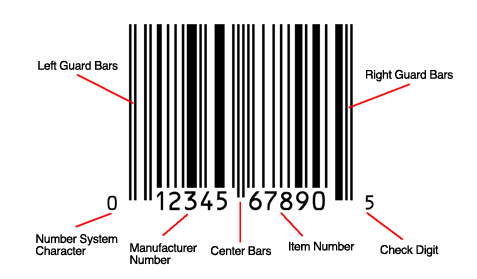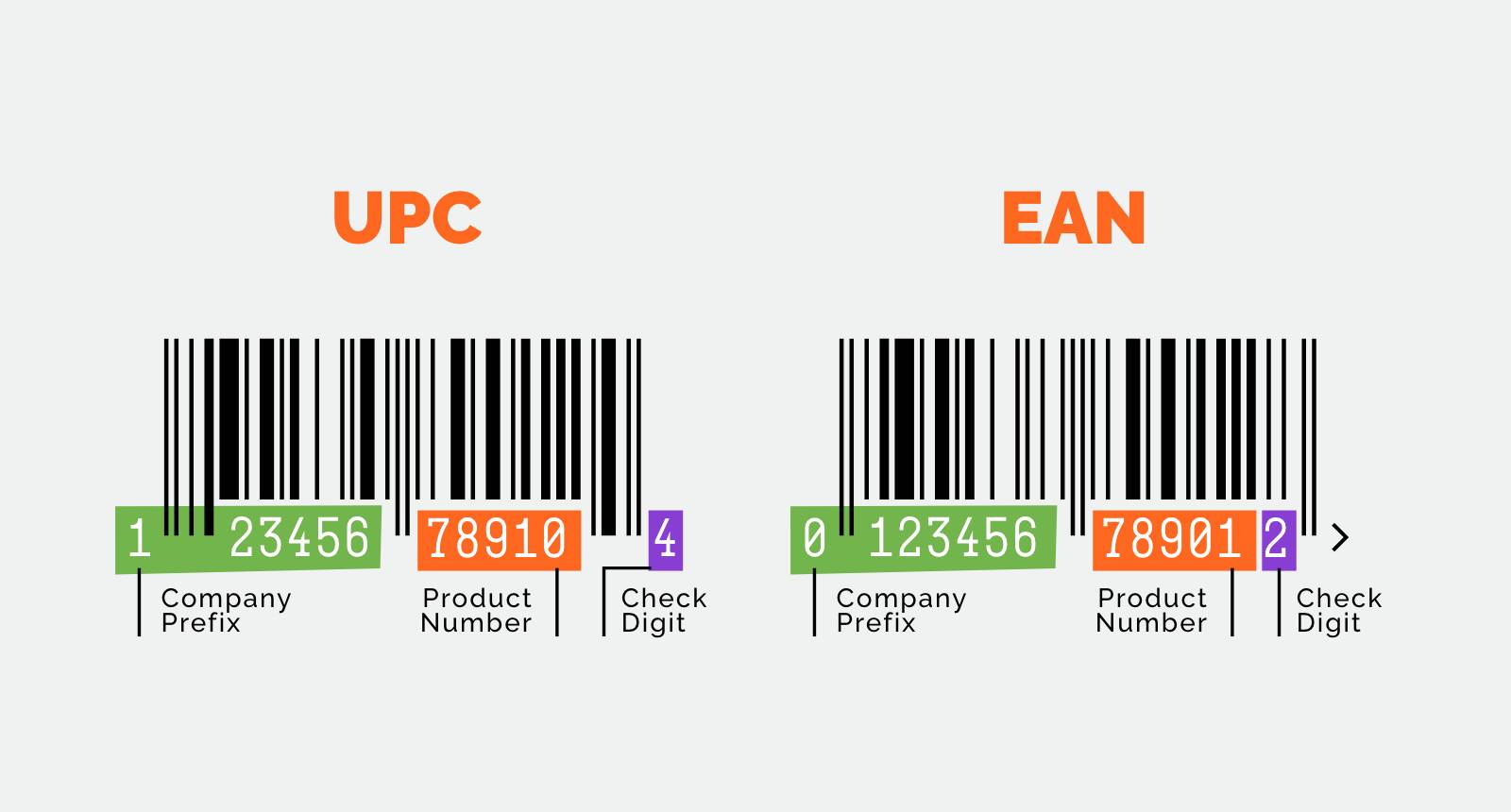Guide to UPC Codes – Everything You Need to Know
Ensuring accurate product identification is vital for successful sales both through traditional retailers and online marketplaces like Amazon, Walmart, Kroger, and eBay. To achieve this, UPC barcodes, also known as Universal Product Codes, serve as standardized global identifiers that enable seamless product selling, reordering, and efficient supply chain tracking.
As a leading authority on UPC implementation and a global barcode provider, our organization receives daily inquiries related to UPC codes and barcodes. Below are some fundamental questions frequently asked about UPC codes:
What are UPC Codes?

UPC stands for “Universal Product Code,” making the term “UPC Code” technically redundant. However, the term “UPC Code” is commonly used to refer to the UPC Barcode symbol, which essentially encodes a 12-digit number called GTIN-12. The GTIN-12 represents UPC data derived primarily from a UPC Company Prefix and Item Reference Numbers.
What is a GTIN?
GTIN refers to a family of GS1 (EAN.UCC) global data structures, employing 14 digits that can be encoded into various data carriers, including barcodes and RFID. The GTIN-12, also known as UPC-A, is a 12-digit number predominantly used in North America.
GTIN stands for Global Trade Item Number, which is a unique identification number used to identify trade items or products in a global supply chain. GTIN is a term used by the GS1, which is responsible for the development and management of barcode standards worldwide. GTINs can take several forms, including a 12-digit UPC code, a 13-digit European Article Number (EAN), or a 14-digit Global Trade Item Number. The GTIN is encoded in a barcode that is applied to the product, allowing it to be easily identified and tracked throughout the supply chain, from manufacturing to retail. GTINs are used to help ensure product authenticity, traceability, and accuracy in data exchange between trading partners.
A UPC is a GTIN, by definition.
The set of GTINs are:
- GTIN-12 (UPC-A): this is a 12-digit number used primarily in North America
- GTIN-8 (EAN/UCC-8): this is an 8-digit number used predominately outside of North America
- GTIN-13 (EAN/UCC-13): this is a 13-digit number used predominately outside of North America
- GTIN-14 (EAN/UCC-14): this is a 14-digit number used to identify trade items at various packaging levels
What is a Barcode?
A barcode is a graphical symbol used to convey data, typically consisting of bar and space patterns. The most common linear barcode is the UPC barcode (UPC-A), represented by 12 numeric digits. It’s essential to note that various barcode languages, analogous to different character sets in languages like English and French, utilize bar and space patterns to convey data.
The information contained in a barcode is typically a unique identifier for the item, such as a GTIN or UPC code, which can be used to track inventory, manage supply chains, and automate the checkout process in retail environments. Barcodes come in various types, including linear or one-dimensional (1D) codes, which consist of a series of bars and spaces of varying widths, and two-dimensional (2D) codes, which encode information using patterns of dots, squares, and other shapes. Barcodes are widely used in a variety of industries, including retail, manufacturing, healthcare, and logistics, and have become an essential tool for streamlining operations and increasing efficiency.
What is a UPC prefix?
A UPC prefix is the first six digits of a UPC code that identify the organization that issued the code. The prefix is assigned by the GS1, which is responsible for the development and management of barcode standards worldwide. All of the codes we sell at UPCs.com are from the GS1, yet at a fraction of the cost. The first digit of the prefix indicates the type of product being identified, with numbers ranging from 0-8 representing different product categories, while the remaining five digits identify the manufacturer or supplier of the product. The manufacturer or supplier is responsible for obtaining a unique prefix and assigning the remaining digits to individual products. The prefix is an important part of the UPC code, as it allows for easy identification of the product and provides valuable information about its origin and manufacturer.
How many UPC codes do I need for my products?

The number of UPC codes you need for your products depends on the number of unique products you plan to sell. Each product that you plan to sell will need its own unique UPC code to identify it. If you have several variations of a product, such as different colors or sizes, each variation will require its own unique UPC code. For example, if you sell five different types of t-shirts in three different sizes, you will need at least 15 unique UPC codes.
It’s important to note that UPC codes are not reusable or transferable, so once a code has been assigned to a product, it cannot be used for any other product. If you plan to sell your products through multiple retailers, each retailer may require you to use a different set of UPC codes to ensure that their inventory and sales data can be accurately tracked. In general, it’s a good idea to plan ahead and purchase enough UPC codes to cover all of your current and future products to avoid any potential issues down the line.
Difference between UPC and EAN Barcodes?
The main difference between EAN and UPC barcodes is in their structure and the regions where they are predominantly used. EAN (European Article Number) barcodes are used worldwide and consist of 13 digits, while UPC (Universal Product Code) barcodes are primarily used in the United States and Canada and consist of 12 digits.

Note the prefix on an EAN is 7 digits while the prefix on a UPC is 6 digits.
Another difference between EAN and UPC codes is in their numbering system. The first digit of an EAN code indicates the numbering system used, with 0-2 representing the EAN system, while the first digit of a UPC code represents the category of the product being identified. Additionally, the EAN code is preceded by a country code, indicating the country where the code was issued, while the UPC code is preceded by a company prefix, identifying the manufacturer of the product.
In terms of usage, EAN codes are commonly used for identifying products in Europe and other parts of the world, while UPC codes are primarily used in North America. However, with the increasing globalization of commerce, many retailers now accept both EAN and UPC codes for their products.
How can I buy a UPC Code?
You can buy UPCs and EANs in seconds at UPCs.com. We’ve been the industry leader for over a decade and are here to help your business with all your UPC barcoding needs. To date, we’ve issued millions of UPC barcodes to over 150,000 businesses globally. Companies can purchase GS1 UPC Codes and everything that goes with them including GTIN assignment, product data, and EPS barcode formats. All of our orders contain barcodes in high resolution PNG, JPG, TIFF, and PDF formats, and can gladly provide any other format/size that you require. We also offer Printed Barcode Labels to customers who want their barcodes printed and shipped to them for labeling.
In summary, establishing accurate and distinctive product identification through UPC barcodes is crucial for optimizing retail operations, and UPCs.com is the leading and primary issuer for UPC barcodes globally. It is strongly advised that companies acquire a duly licensed UPC Company Prefix and adhere to industry standards diligently to mitigate any potential challenges arising from inferior alternatives.
Have any further questions? We’re here to help, don’t hesitate to reach out and contact us anytime.
Need UPC or EAN codes?

